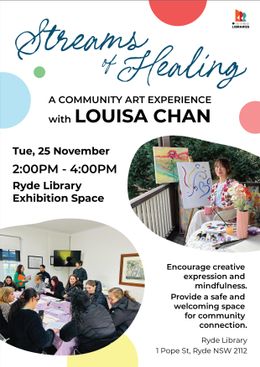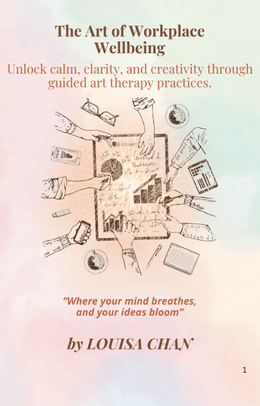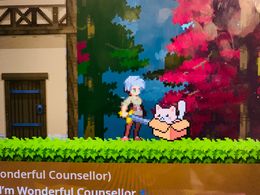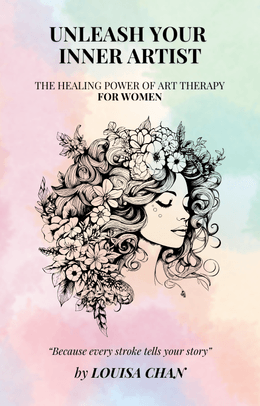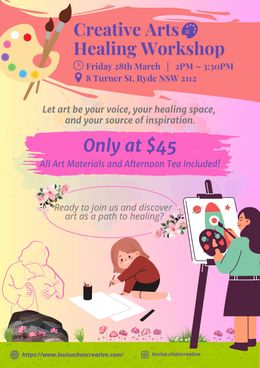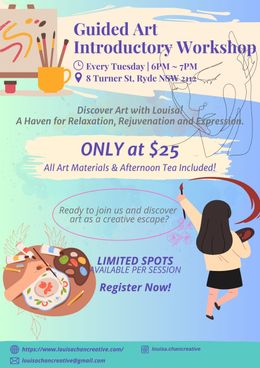FAQs
What is art therapy?
Art therapy is a form of psychotherapy that uses the creative process of making art to promote emotional well-being and personal growth. It provides a safe and supportive space for individuals to explore their thoughts, feelings, and experiences through artistic expression, facilitating insight, healing, and self-awareness. Art therapy can involve various mediums, such as drawing, painting, sculpture, and collage, allowing individuals to express themselves in ways that words may not fully capture.
How can art therapy help?
Art therapy can be beneficial for individuals of all ages and backgrounds, offering a holistic approach to mental health and emotional wellness. By engaging in the creative process, clients can gain insight into their emotions, develop coping strategies, and cultivate a sense of empowerment and self-expression. Art therapy can also aid in reducing stress, improving self-esteem, and enhancing communication and social skills. Whether dealing with trauma, anxiety, depression, or other challenges, art therapy provides a unique avenue for healing and personal development.
What does an art therapy group session look like?
An art therapy group session typically involves a small group of participants working together in a supportive environment under the guidance of a trained art therapist. Sessions begin with a brief introduction and discussion of the session’s theme or focus. Participants are then encouraged to engage in art-making activities, using a variety of materials and techniques. The therapist facilitates the process, providing guidance and support as needed. After the creative session, there is an opportunity for group members to share their artwork and reflections, fostering a sense of community, understanding, and mutual support. Group sessions can be tailored to address specific themes or goals, such as building self-esteem, managing stress, or improving communication skills.
What does an art therapy home visit look like?
In-home art therapy sessions offer a personalised and comfortable environment for clients to engage in the therapeutic process. As an art therapist, I will bring a selection of art materials and facilitate art-making activities tailored to the individual or family's preferences and therapeutic goals. These sessions provide an opportunity for clients to explore emotions, strengthen relationships, and develop coping skills within the familiar surroundings of their own home. Home visits can be particularly beneficial for individuals who may have difficulty accessing traditional therapy settings or who prefer the privacy and comfort of their own space.
Who can benefit from art therapy?
Art therapy can benefit people of all ages, from children to adults and seniors. It is particularly helpful for individuals experiencing mental health challenges such as anxiety, depression, PTSD, and trauma. Additionally, art therapy can support those dealing with life transitions, grief and loss, chronic illness, and relationship difficulties. It can also be beneficial for individuals seeking personal growth, self-discovery, and a deeper understanding of themselves. No prior art experience is necessary, as the focus is on the therapeutic process rather than the final product.
Do I need to be good at art to participate in art therapy?
No artistic skills or prior experience is required to participate in art therapy. The focus is on the process of creation rather than the final product. Art therapy is about self-expression and exploration, allowing you to communicate your thoughts and emotions in a non-judgmental space. The art therapist will guide you through the creative process, helping you find the medium and approach that works best for you. The emphasis is on self-discovery, healing, and personal growth, not on producing a work of art.
What types of materials are used in art therapy?
Art therapy sessions can incorporate a wide range of materials, including but not limited to:
- Drawing materials: Pencils, crayons, markers, charcoal
- Painting supplies: Watercolors, acrylics, brushes, canvases
- Sculpting materials: Clay, Play-Doh, wire
- Collage materials: Magazines, colored paper, glue, scissors
- Mixed media: Found objects, fabric, beads
The choice of materials is often tailored to the individual’s preferences and therapeutic goals, allowing for a personalised and meaningful experience.
How long does an art therapy session last?
Art therapy sessions typically last between 60 to 90 minutes, depending on the format and individual needs. Group sessions may be slightly longer to allow for introductions, art-making, and group sharing. The length and frequency of sessions can be adjusted to meet the specific needs and goals of the client, providing a flexible and supportive approach to therapy.
How do I get started with art therapy at Louisa Chan Creative?
To get started with art therapy at Louisa Chan Creative, you can reach out to us via phone, email, or our website’s contact form. We’ll set up an initial consultation to discuss your goals and needs and determine the best approach for your therapy journey. Whether you’re interested in individual sessions, group therapy, or home visits, we’re here to support you in your path to healing and self-discovery through the power of art.
How is Art Therapy Different from Other Therapies?
Unlike traditional talk therapy, art therapy allows you to express yourself non-verbally through art. This can be especially helpful for those who find it difficult to articulate their thoughts and feelings. Art therapy focuses on the process of creating art rather than the final product, allowing for deep exploration of emotions and experiences.
Benefits of Art Therapy
- Emotional Release: Art therapy offers a powerful outlet for emotions, helping you process and understand your feelings.
- Self-Discovery: Through the creative process, you can gain valuable insights into your thoughts, beliefs, and behaviours.
- Improved Communication: Art therapy can enhance your ability to express yourself and connect with others.
- Stress Reduction: Engaging in creative activities can help lower stress levels and promote relaxation.
- Increased Self-Esteem: Creating something tangible can boost your confidence and sense of accomplishment. Building confidence in your artistic abilities can positively impact your overall self-esteem.
- Enhanced Creativity: Art therapy stimulates creativity and problem-solving skills.
Common Myths About Art Therapy
Myth 1: You need to be a talented artist to benefit from art therapy.
- Truth: Art therapy is about the process, not the product. Anyone can benefit from it, regardless of artistic ability.
Myth 2: Art therapy is only for children.
- Truth: Art therapy is effective for people of all ages, including adults and seniors.
Myth 3: Art therapy is just a hobby.
- Truth: Art therapy is a structured therapeutic approach facilitated by a trained professional.
Discover the transformative power of art therapy. Our programs harness the creative process to promote emotional well-being, build resilience, and foster personal growth.

